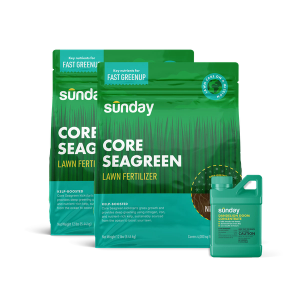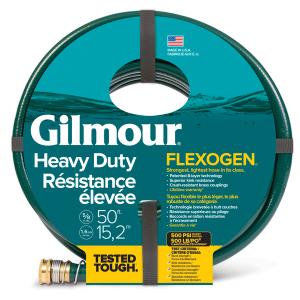Whether you’re wanting to test your soil before planting something new, you have dry spots or water puddling throughout your lawn, or you just want to learn more about the soil on your piece of land—a soil drainage test can help you troubleshoot any issues you might face with drainage and water retention.
How to test soil drainage
If you’re testing an area for planting, you can do this test in that particular area, but if you’re troubleshooting a drainage issue, we recommend testing a few areas to see if drainage differs throughout the yard. Here's how you do it:
- Dig a hole 12 inches wide and 12 inches deep.
- Fill the hole to the top with water and let it sit overnight to moisten the surrounding soil.
- Fill the hole with water again the next morning.
- Measure the depth of drainage every hour or two until the hole has completely drained.
- Calculate the average inches per hour the soil drained—this is your drainage rate.
As they say, knowledge is power! Now that you know your soil’s drainage rate, you can address any spots that might be overly dry or wet.
How to fix soil drainage problems
Your drainage rate will tell you what issues your soil might be facing. Once you know that, you can select plants suitable for that area, or take steps to amend the soil to improve the drainage issue.
Excessive drainage
If your hole drained faster than four inches per hour (the entire 12 inch hole drained in under 3 hours) your drainage is excessive. This is great for plants that like dry soils, but if you need your soil to hold on to water a little longer, mix in some compost to help build organic matter and improve water-holding capacity.
Excellent drainage
If your drainage rate is between 1 to 4 inches per hour (the hole takes 3-12 hours to drain) your soil drainage is adequate for most lawn and landscape plants.
Poor drainage
If you still see standing water in your hole after 12 hours, your drainage is poor. The soil here might have a lot of clay or might be compacted, or this may just be a low-lying area in the landscape. This might be a good spot for a rain garden, or you can aerate the area to try and alleviate compaction.
Excessively drained soils may require a little extra irrigation, while poorly drained soils might do best with a little less water. Audit your irrigation system and if possible, set up water zones to apply the right amount of water to different areas of the yard. Plant the right plant in the right place, and reduce traffic in poorly drained areas to prevent compaction.
Cited sources
Understanding and Installing Drainage Systems. Texas A&M AgriLife Extension.
Soil Health, Drainage, and Improving Soil. University of Maryland Extension
Solutions to Soil Problems III. Drainage. Utah State University Extension.















